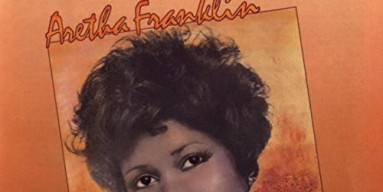Bass gets a bad rap in music, usually seen as a destroyer of stereos or a noise complaint to the police waiting to happen. Two clever engineering students at George Mason University used the power of sub-bass to their advantage however, channeling its waves into an experimental rendition of fire extinguisher, using the low audio waves to put out fires.
Turns out they weren't the first "high-minded" individuals to employ intense bass.
Society already has stereotypes for people who enjoy bass-based music of the lowest levels: They're either hip-hop heads who've paid far too much to install enormous subwoofers in the back of their Dodge Neon, or they're the kids making dubstep remixes of every EDM song on the radio without a proper grasp of audio mastering. If you find yourself a member of one of these two niches, you should know that your parents, grandparents and folks centuries older than you will always be able to trump the lowest bass notes hit by your favorite rapper/DJ.
Here are a few examples:
IMPORTANT: If you don't hear the bass in the tracks below, that 's normal. "Sub-bass" is generally defined as bass notes so low the human body can only feel them, not hear. If you turn up your stereo too loud, especially without a good subwoofer, you're liable to damage your equipment.
Enya
Yeah, the most recognized figure in the New Age music movement, the one that must be so lame because your mom listened to it constantly...also pulled off one of the lowest listenable moments in modern bass on her 1988 album Watermark. The track "The Longships" has been tested as low as 15 Hz in places thanks to the drone of the synthesizer she employs. For reference, the frequency of the aforementioned fire extinguisher is somewhere between 30 and 60 Hz. This doesn't mean that you'll be able to take a stereo blasting Enya and put out a blaze. You may be able to terrify your cats however (done and done).
Tim Storms
Imagine opening your mouth and producing a noise so low that no one in the room would be able to hear it. This is something that Tim Storms, the Guinness record holder for "lowest note produced by a human," can do at will when singing, producing a G#0 note at the frequency of .7973 Hz. Translated for non-music buffs: absurdly low. For reference, in a metaphor given by the performer himself, if you were to double the length of the piano and continue the frequency level lower until the end, he would be the last key on the low end of the keyboard. What's even more impressive is that he's not a one trick pony: He also owns the record for the largest vocal range of any human, allowing him to hit A4...ten octaves higher than his lowest note. To put that in perspective, last year VVN Music listed Faith No More frontman Mike Patton as having the greatest range in popular music, at "just" six octaves. Which your correspondent described then as "unreal." Storms performs largely choral work now.
The Octobass
The Octobass is not, unfortunately, an instrument played by a Marvel superhero rock star. It is, however, the largest string instrument ever constructed. French luthier (one who makes stringed instruments) Jean-Baptiste Vuillaume built the first model in 1850 that, while awesome, did not catch on in the music community. It's essentially the same design as the standard double bass...except 11.5 feet tall (a double bass is typically around 6.5 feet). That sort of size required two players—one to bow and another to finger. It also featured only three strings compared to the typical four, as Vuillaume probably figured if you were buying one, you didn't much care for how high it could get. Not many bought into the idea of a bass that could get as low as 16.5 Hz, but Hector Berlioz—of Symphonie Fantastique fame—was a noted fan.
Pedal Organs
Classical concert halls may not have had the stomach for absurdly low bass levels but churches sure were. There wasn't much of a demand for a bass that could get to 16 Hz but cathedrals and similar places of worship had been building them for hundreds of years, considering they were about as baroque as baroque could get (the Greeks had developed an organ as early as the First Century B.C., but not of equal range). Granted, unlike a octobass, people don't build organs strictly for low octaves, so it's rare that listeners get to hear how low it can go. A good example of its minimal range come from Camille Saint-Saëns' Symphony No. 3 (nicknamed the "Organ Symphony"). Many audio techies enjoy using this piece to test out new subwoofers.
Black Holes
Okay, so black holes aren't an instrument, but astrophysics wasn't cool until Neil DeGrasse Tyson came along, so we're just going to throw this one out there. Sub-bass is known for leaving listeners with a feeling of unease, caused by the rumbles of sound waves unheard, but felt. Thus its appropriate that black holes, the most terrifying thing in the universe, also produces noises lower than anything else ever discovered. Astronomers using NASA technology discovered the fact while observing a supermassive black hole in the Perseus cluster, 250 million light years away. That object was producing a single note 57 octaves below a middle-C (reminder: Tim Storms has a 10 octave range). What does 57 octaves lower equate to? A noise that's one-quadrillion times too low for the human ear to detect. And be glad: Our lives would be awful if we could hear them.













